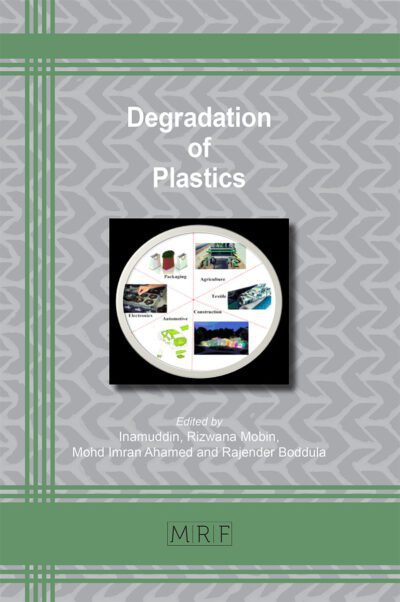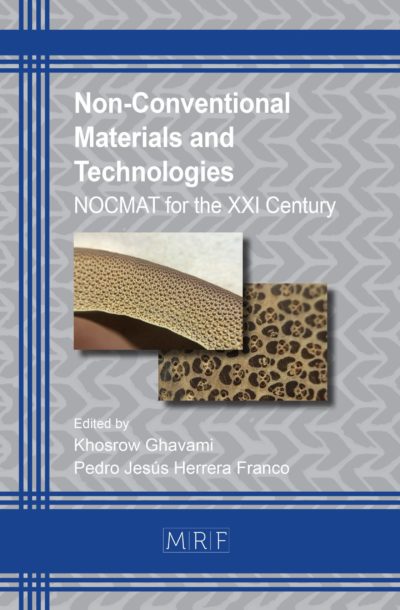Wire arc additive manufacturing deposition with solid-state recycled wire processed via friction stir extrusion
G.H.S.F.L. Carvalho, G. Campatelli, D. Campanella, R. Di Lorenzo
Abstract. Sustainability is increasingly important in modern engineering, influencing both product design and manufacturing processes. Friction stir extrusion has emerged as a promising method for recycling aluminum chips in the solid state, offering energy savings compared to traditional remelting recycling processes. This study investigates the use of solid-state recycled wires, processed through friction stir extrusion, as filler materials in wire arc additive manufacturing (WAAM) based on gas metal arc welding (GTAW) process. The research studied the feasibility of the application, addressing key processes and metallurgical challenges and aspects to be improved. The results show that using the friction stir extruded wires is feasible, but there are still challenges to overcome, such as impurities, geometric variations, and porosity. With further optimization in cleaning treatments and welding parameters, recycled friction stir extruded materials hold promise for sustainable manufacturing.
Keywords
WAAM, Friction Stir Extrusion, Sustainability
Published online 5/7/2025, 7 pages
Copyright © 2025 by the author(s)
Published under license by Materials Research Forum LLC., Millersville PA, USA
Citation: G.H.S.F.L. Carvalho, G. Campatelli, D. Campanella, R. Di Lorenzo, Wire arc additive manufacturing deposition with solid-state recycled wire processed via friction stir extrusion, Materials Research Proceedings, Vol. 54, pp 143-149, 2025
DOI: https://doi.org/10.21741/9781644903599-16
The article was published as article 16 of the book Material Forming
![]() Content from this work may be used under the terms of the Creative Commons Attribution 3.0 license. Any further distribution of this work must maintain attribution to the author(s) and the title of the work, journal citation and DOI.
Content from this work may be used under the terms of the Creative Commons Attribution 3.0 license. Any further distribution of this work must maintain attribution to the author(s) and the title of the work, journal citation and DOI.
References
[1] S.N.A. Rahim, M.A. Lajis, S. Ariffin, A Review on Recycling Aluminum Chips by Hot Extrusion Process, Procedia CIRP. 26 (2015) 761–766. https://doi.org/10.1016/j.procir.2015.01.013
[2] R.N. Lumley, Fundamentals of Aluminium Metallurgy: Production, Processing and Applications, 1st ed., Woodhead Publishing Limited, 2011.
[3] X. Yang, R. Li, T. Yuan, L. Ke, J. Bai, K. Yang, A comprehensive overview of additive manufacturing aluminum alloys: Classifications, structures, properties and defects elimination, Mater. Sci. Eng. A. 919 (2025) 147464. https://doi.org/10.1016/j.msea.2024.147464
[4] Y.M. Altharan, S. Shamsudin, S. Al-Alimi, Y. Saif, W. Zhou, A review on solid-state recycling of aluminum machining chips and their morphology effect on recycled part quality, Heliyon. 10 (2024) e34433. https://doi.org/10.1016/j.heliyon.2024.e34433
[5] D. Baffari, G. Buffa, D. Campanella, L. Fratini, A.P. Reynolds, Process mechanics in Friction Stir Extrusion of magnesium alloys chips through experiments and numerical simulation, J. Manuf. Process. 29 (2017) 41–49. https://doi.org/10.1016/j.jmapro.2017.07.010
[6] G. Ingarao, M. Amato, A. Latif, A.D. La Rosa, R. Di Lorenzo, L. Fratini, Life Cycle Assessment of aluminum alloys chips recycling through single and multi-step Friction Stir Consolidation processes, J. Manuf. Syst. 68 (2023) 651–659. https://doi.org/10.1016/j.jmsy.2023.05.021
[7] T. Anderson, B.E. Anderson, F.G. Armao, P. Berube, T. Burns, D.M. DePauw, J. Ginder, B.W. Hemmert, R.B. Hirsch, C. Hsu, M.S. Kadlec, S.F. McCleary, M.A. Palmer, S.E. Pollard, M.J. Russell, D.J. Spinella, M.P. Vandenberg, K.L. Williams, J. Zhang, J.H. Myers, Aluminum and Aluminum Alloys, in: A. O’Brien (Ed.), AWS Weld. Handb. Vol. 5 – Mater. Appl. Part 2, 9th ed., American Welding Society, Miami, USA, 2015: pp. 1–135.
[8] M. Arana, E. Ukar, I. Rodriguez, A. Iturrioz, P. Alvarez, Strategies to reduce porosity in Al-Mg WAAM parts and their impact on mechanical properties, Metals (Basel). 11 (2021). https://doi.org/10.3390/met11030524
[9] R. Fu, S. Tang, J. Lu, Y. Cui, Z. Li, H. Zhang, T. Xu, Z. Chen, C. Liu, Hot-wire arc additive manufacturing of aluminum alloy with reduced porosity and high deposition rate, Mater. Des. 199 (2021) 109370. https://doi.org/10.1016/j.matdes.2020.109370
[10] S. Chandra, J. Radhakrishnan, S. Huang, S. Wei, U. Ramamurty, Solidification in metal additive manufacturing: challenges, solutions, and opportunities, Prog. Mater. Sci. 148 (2025) 101361. https://doi.org/10.1016/j.pmatsci.2024.101361
[11] G. Mathers, The Welding of Aluminium and its Alloys, 1st ed., Woodhead Publishing Limited, Cambridge, England, 2002. https://doi.org/10.1007/s13398-014-0173-7.2
[12] N. Trometer, B. Chen, M. Moodispaw, W. Cai, T. Rinker, S. Kamat, Z. Velasco, A.A. Luo, Modeling and validation of hydrogen porosity formation in aluminum laser welding, J. Manuf. Process. 124 (2024) 877–890. https://doi.org/10.1016/j.jmapro.2024.06.052
[13] G.H.S.F.L. Carvalho, G. Campatelli, L. Fratini, Feasibility study of using friction stir extruded recycled aluminum rods for welding and additive manufacturing, Manuf. Lett. 42 (2024) 52–55. https://doi.org/10.1016/j.mfglet.2024.10.007
[14] S. Wang, H. Qu, S. Yu, S. Xia Zhang, Nondestructive investigation on close and open porosity of additively manufactured parts using an X-ray computed tomography, Mater. Today Proc. 70 (2022) 124–130. https://doi.org/10.1016/j.matpr.2022.08.559
[15] G. Buffa, D. Campanella, M. Adnan, U. La Commare, G. Ingarao, L. Fratini, Improving the Industrial Efficiency of Recycling Aluminum Alloy Chips Using Friction Stir Extrusion: Thin Wires Production Process, Int. J. Precis. Eng. Manuf. Technol. (2024). https://doi.org/10.1007/s40684-023-00573-w














